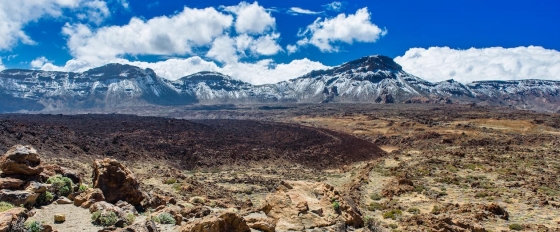Bajamar Rainfall & Precipitation: Monthly Averages and Year-Round Insights
This page shows both the average monthly rainfall and the number of rainy days in Bajamar, Canary Islands, Spain. This average is based on long-term data collected between 1990 and 2020. Let's now guide you through the details for a complete overview.
Bajamar maintains relatively dry conditions year-round, with an average annual precipitation of 286 mm.
Monthly Precipitation Levels
The average number of days each month with precipitation (> 0.2 mm)
Bajamar can be quite wet during December, receiving approximately 37 mm of precipitation over 8 rainy days.
In contrast August, experiences much drier conditions, with 12 mm of rainfall, spread across a single rainy day.December, the wettest month, has a maximum daytime temperature of 20°C. The city receives 171 hours of sunshine in this period. During the driest month August you can expect a temperature of 23°C. For more detailed insights into the city’s temperatures, visit our Bajamar Temperature page.
Annual Precipitation in Spain
The map below shows the annual precipitation across Spain. You can also select the different months in case you are interested in a specific month.
 heavy rainfall
heavy rainfall
 high
high
 moderate
moderate
 low
low
 almost none
almost none
Amsterdam Precipitation Compared World Wide
Bajamar’s average annual precipitation is 286 mm. Let’s compare this to some popular worldwide tourist destinations:
In Barcelona, Spain, the average annual precipitation is 620 mm, evenly distributed across the year with no extreme wet or dry seasons.
Meanwhile, Buenos Aires, Argentina, enjoys a humid subtropical climate with 1000 mm of annual rainfall, mostly in the summer.
In Tokyo, Japan, the average annual precipitation is 1528 mm, with significant summer rains due to typhoon season.
Mumbai, India, experiences a tropical monsoon climate with 1860 mm of annual rainfall, with the majority of precipitation happening during the monsoon season from June to September.
How is Precipitation Measured?
Precipitation amounts are measured using specific gauges installed at weather stations, collecting both rain and snow and any other type of precipitation. Rainfall is measured directly in millimeters, while that from snow and ice is obtained by melting it. Automated systems often incorporate heaters to make this easier.
Information from these stations is transmitted via Wi-Fi, satellite, GPS, or telephone connections to central monitoring networks. This information is immediately updated and integrated into weather models and forecasts.
Interesting weather facts
- The U.S. has a significant number of thunderstorms every year, with over 14.6 million taking place across the world annually.
- Approximately 70% of lightning bolts strike land rather than oceans.
- A storm named John was the longest-lasting Pacific tropical storm, continuing for 31 days. As it crossed the dateline twice, it changed status from a hurricane to a typhoon and back to a hurricane.
For more detailed information about Bajamar’s weather, including sunshine hours, humidity levels, and temperature data, visit our Bajamar Climate page.
Current rainfall in Bajamar










